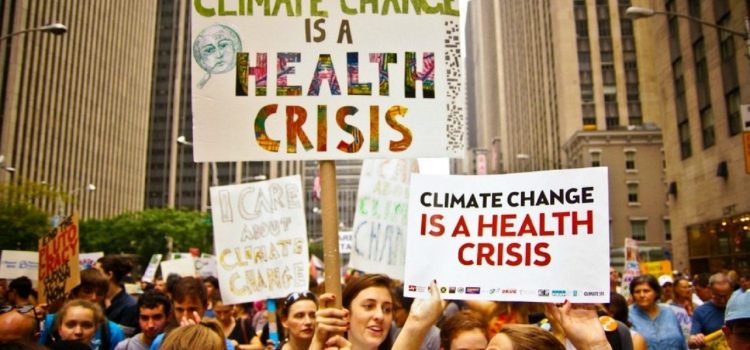
Climate change is one of the most pressing issues of our time, with far-reaching consequences that extend beyond environmental degradation. Among the most significant yet often overlooked impacts is its effect on public health. As global temperatures rise, weather patterns shift, and natural disasters become more frequent and severe, the implications for human health are profound and multifaceted. This article delves into how climate change is shaping public health, exploring the various ways in which it affects communities worldwide.
Heat-Related Illnesses
One of the most direct health impacts of climate change is the increase in heat-related illnesses. As global temperatures rise, heatwaves are becoming more frequent and severe. Prolonged exposure to extreme heat can lead to heat exhaustion, heatstroke, and even death. Vulnerable populations, such as the elderly, children, and those with pre-existing health conditions, are particularly at risk.
Heatwaves also exacerbate chronic conditions such as cardiovascular and respiratory diseases. For instance, high temperatures can lead to the deterioration of air quality, which in turn affects those with asthma and other respiratory ailments. The increased use of air conditioning to combat heat can strain power grids, leading to blackouts that can further endanger lives, particularly in regions unaccustomed to extreme heat.
Vector-Borne Diseases
Climate change is altering the distribution and behavior of disease-carrying vectors such as mosquitoes and ticks. Warmer temperatures and changing precipitation patterns create favorable conditions for the proliferation of these vectors, leading to the spread of diseases such as malaria, dengue fever, Zika virus, and Lyme disease.
Regions that were previously inhospitable to these vectors are now seeing new outbreaks, posing significant public health challenges. For example, the Aedes aegypti mosquito, the primary carrier of dengue and Zika, is expanding its range into temperate zones, increasing the risk of these diseases in areas that were previously unaffected.

Food and Water Security
Climate change is also impacting food and water security, which has direct and indirect effects on public health. Changes in temperature and precipitation patterns affect agricultural productivity, leading to food shortages and increased prices. Malnutrition and food insecurity can result in a host of health problems, including stunted growth in children, weakened immune systems, and increased susceptibility to infectious diseases.
Water security is similarly threatened by climate change. Droughts and changing rainfall patterns can lead to water scarcity, affecting both drinking water supplies and agricultural irrigation. Contaminated water sources can lead to outbreaks of waterborne diseases such as cholera and dysentery, particularly in regions with inadequate sanitation infrastructure.
Mental Health
The psychological impact of climate change is an emerging area of concern. The stress and anxiety associated with extreme weather events, such as hurricanes, floods, and wildfires, can have lasting effects on mental health. Communities that experience frequent natural disasters may suffer from chronic stress, depression, and post-traumatic stress disorder (PTSD).
Moreover, the anticipation of climate-related events can also contribute to mental health issues. The concept of “eco-anxiety” is gaining recognition, describing the chronic fear of environmental doom. This is particularly prevalent among young people who are increasingly aware of the long-term implications of climate change.
Air Quality
Air pollution is another critical factor linking climate change to public health. The burning of fossil fuels, which contributes to global warming, also releases pollutants such as particulate matter, nitrogen oxides, and sulfur dioxide into the atmosphere. These pollutants can cause respiratory and cardiovascular diseases, and long-term exposure can lead to chronic health conditions such as lung cancer and heart disease.
Furthermore, rising temperatures can increase the formation of ground-level ozone, a harmful air pollutant. Ozone can exacerbate asthma and other respiratory conditions, leading to increased hospital admissions and healthcare costs.
Displacement and Migration
Climate change is increasingly recognized as a driver of human displacement and migration. Rising sea levels, extreme weather events, and deteriorating living conditions can force communities to relocate, leading to a host of public health challenges. Displaced populations often face inadequate shelter, limited access to healthcare, and poor sanitation, increasing their vulnerability to infectious diseases and other health issues.
Migration can also strain healthcare systems in receiving areas, as they may be unprepared to handle the influx of new residents. This can lead to overcrowded facilities, reduced quality of care, and increased transmission of communicable diseases.
Public Health Infrastructure
The impact of climate change on public health infrastructure cannot be overstated. Extreme weather events can damage healthcare facilities, disrupt supply chains, and hinder access to essential services. For example, hurricanes and floods can destroy hospitals, clinics, and pharmacies, making it difficult for communities to receive medical care.
In addition, climate change can strain public health resources by increasing the demand for services. For instance, heatwaves can lead to a surge in emergency room visits, while outbreaks of vector-borne diseases can overwhelm public health agencies. Preparing for and responding to these challenges requires significant investment in infrastructure, training, and resources.
Mitigation and Adaptation Strategies
Addressing the public health impacts of climate change requires a multifaceted approach that includes both mitigation and adaptation strategies. Mitigation efforts aim to reduce greenhouse gas emissions and limit global warming, thereby preventing the worst health impacts of climate change. This can be achieved through policies that promote renewable energy, energy efficiency, and sustainable transportation.
Adaptation strategies focus on enhancing the resilience of communities and healthcare systems to the inevitable impacts of climate change. This includes improving early warning systems for extreme weather events, strengthening public health infrastructure, and developing programs to support vulnerable populations. For example, cities can implement heat action plans that provide cooling centers and distribute information on how to stay safe during heatwaves.
Public health professionals also play a crucial role in addressing the health impacts of climate change. They can conduct research to better understand the links between climate change and health, develop public health interventions, and advocate for policies that protect health and the environment.
Conclusion
The impact of climate change on public health is a complex and multifaceted issue that requires urgent attention. From heat-related illnesses and vector-borne diseases to food and water security, mental health, and displacement, the health consequences of a changing climate are profound and far-reaching. Addressing these challenges requires a coordinated effort that includes both mitigation and adaptation strategies, as well as the active involvement of public health professionals.
As we continue to grapple with the realities of climate change, it is essential to recognize and address its impact on public health. By doing so, we can protect the well-being of communities worldwide and build a healthier, more resilient future.










